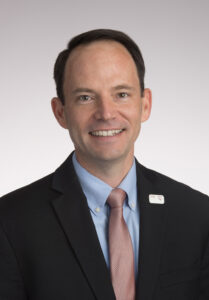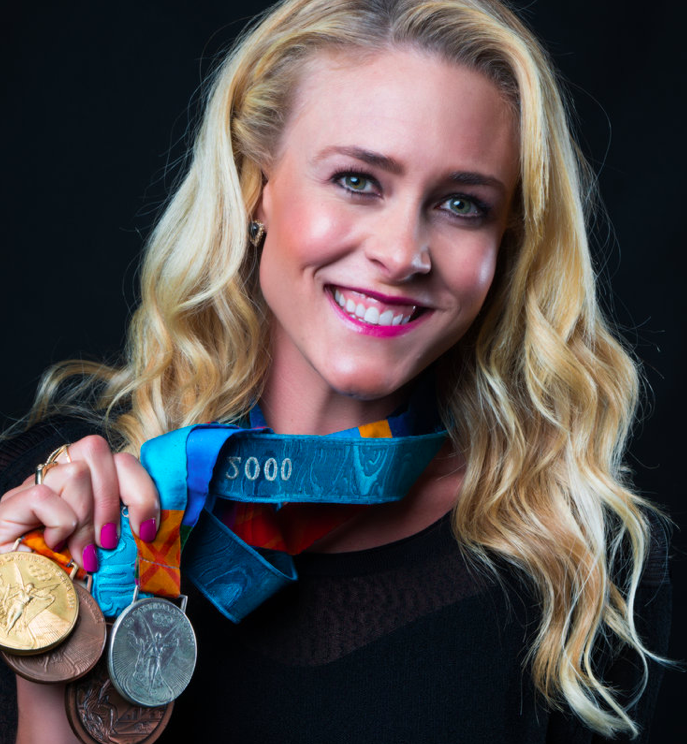According to Forbes, the sports industry’s projected worth will grow to over $70 billion this year. Encouraged by its fans, the industry’s sustainability initiatives are keeping pace.
In the NFL, for instance, the Atlanta Falcons’ new Mercedez-Benz Stadium is the first pro football stadium in the US to reach LEED platinum certification. The NHL’s new Greener Rinks initiative is measuring the environmental impact of 4,800 North American indoor ice rinks on their communities. And this past year, MLB awarded its annual Green Glove Award to the San Francisco Giants, which diverts 94% of its trash from landfills.
To get their take on the intersection of sport and sustainability, Bard MBA student Alexandra Criscuolo, an athlete in her own right, spoke with Allen Hershkowitz, former President of the Green Sports Alliance; Rocky Harris, CEO of USA Triathlon; and Kaitlin Sandeno Hogan, an Olympic gold medalist in swimming, about how the industry is primed to move fans and society toward a more sustainable future.
The following Q&A is an edited excerpt from the Bard MBA’s May 3rd The Impact Report podcast. The Impact Report brings together students and faculty in Bard’s MBA in Sustainability program with leaders in business, sustainability and social entrepreneurship.
Reprinted from GreenBiz.
CRISCUOLO: WHY IS SPORTS SUSTAINABILITY CRUCIAL?

ALLEN HERSHKOWITZ: The question is, “How do you get people to act on climate change?” Science is my passion, but the fact is that in the US less than twenty percent of the population follows science, while over seventy-five percent follows sports. You have to connect with people where they’re at. Outside of the family, the most influential role models are athletes and entertainers.
Sports is also big market, it’s a trillion and a half in annual economic activity. Plus, every industry meets at a sporting event: the paper industry, the food industry, the plastics industry, the chemicals industry, transportation, water. They’re all either sponsors of major sporting events or vendors to major sporting events.
When a sports organization like Major League Baseball says climate change is real and it matters to our sport, when the National Football League and Major League Soccer, the National Hockey League, NASCAR, USTA, when all of these successful, very culturally visible and economically influential sports organizations say that climate change matters, the marketplace notices.
Sport is also a cultural signifier that’s not viewed as political. It can really help promote climate literacy and reduce the cultural polarization related to environmental conversations.
CRISCUOLO: HOW HAS THE FIELD CHANGED SINCE YOU FIRST STARTED THIS WORK?
HERSHKOWITZ: It’s changed a lot. When I first started, there were no environmental programs at any of the major sports organizations. Most venue operators at the time had no understanding of the urgent environmental issues that their activities related to.
Now, basically every sports team in North America has an environmental program. Most venues in the United States are paying attention to operations in an environmental way. We have over 25 LEED certified stadiums now, more than 20 professional sports stadiums with solar arrays, and three times that number at the collegiate sports level. We have healthier food, water conservation initiatives, recycling rates in excess of 90%.
A lot of it started because there was a good business case for it, but branding also played a role. Fans consistently indicate support for sports organizations doing environmentally better things.

CRISCUOLO: HOW IS USA TRIATHLON DEVELOPING ITS SUSTAINABILITY STRATEGY?
ROCKY HARRIS: Although we’re a very forward-thinking organization and have been for a long time, when I started with USA Triathalon about a year ago, we didn’t even have a sound recycling program in our building. Within two weeks, I brought in recycling bins and arranged with the company that manages our trash to add that as part of their services to us.
We have 4300 sanctioned events around the country. Where I think we can do better is by communicating to those events on how to be carbon neutral. There’s a lot of plastic with our events, a lot of things thrown away, so we’re working to make sure they use more sustainable practices. At our national events, of course we use recycling bins and don’t allow paper registration. We also do digital programs at most of our events and hold used clothing and shoe recycling drives. I’m currently working with Arizona State University and a few other groups to help us develop an overarching sustainability strategy—not just tactics, which are what we’re implementing right now.
From a broader sustainable strategy perspective, we see our sport as a sustainable sport. It’s outdoors, and we promote riding bikes to work. We believe that being outdoors and being a part of nature helps people really understand the value of sustainability overall.
CRISCUOLO: AS AN ATHLETE, WHAT DO YOU WISH YOU COULD CHANGE IN TERMS OF SUSTAINABILITY?
KAITLIN SANDENO HOGAN: Swimmers go through their bathing suits so quickly. You can only race in one of those suits one to three times and then you get rid of it. That’s something I would be really interested to see if we can change as a sport. The water bottles, too—I have a new water bottle almost every day between losing them and throwing them away.

CRISCUOLO: WITH THE LA 2028 OLYMPICS ON THE HORIZON, WHAT OPPORTUNITIES DO YOU SEE TO MAKE OLYMPIC SWIMMING MORE SUSTAINABLE?
SANDENO HOGAN: A lot goes into making the Olympics come together, and often the top concern is how we outdo the last one, not how we do that without negatively impacting our environment. Hopefully, the pools will be salt water pools, which get rid of the chlorine, get rid of the toxins.
Los Angeles is on point in cleaning up the environment, so I’m excited to see what the Olympic Committee and the city can do. In terms of making the sport of swimming more sustainable, I think we’re popular every four years when the Olympics comes around. I’d like to see our sport be more popular year round, as well as more financial sustainability for all athletes, not just swimmers.
